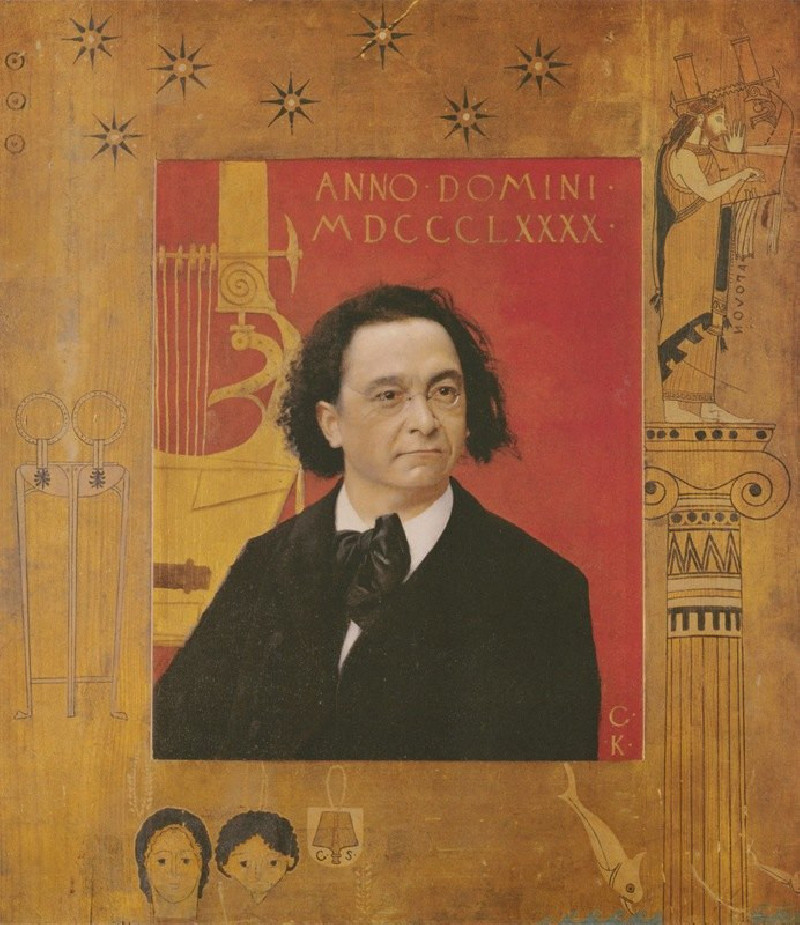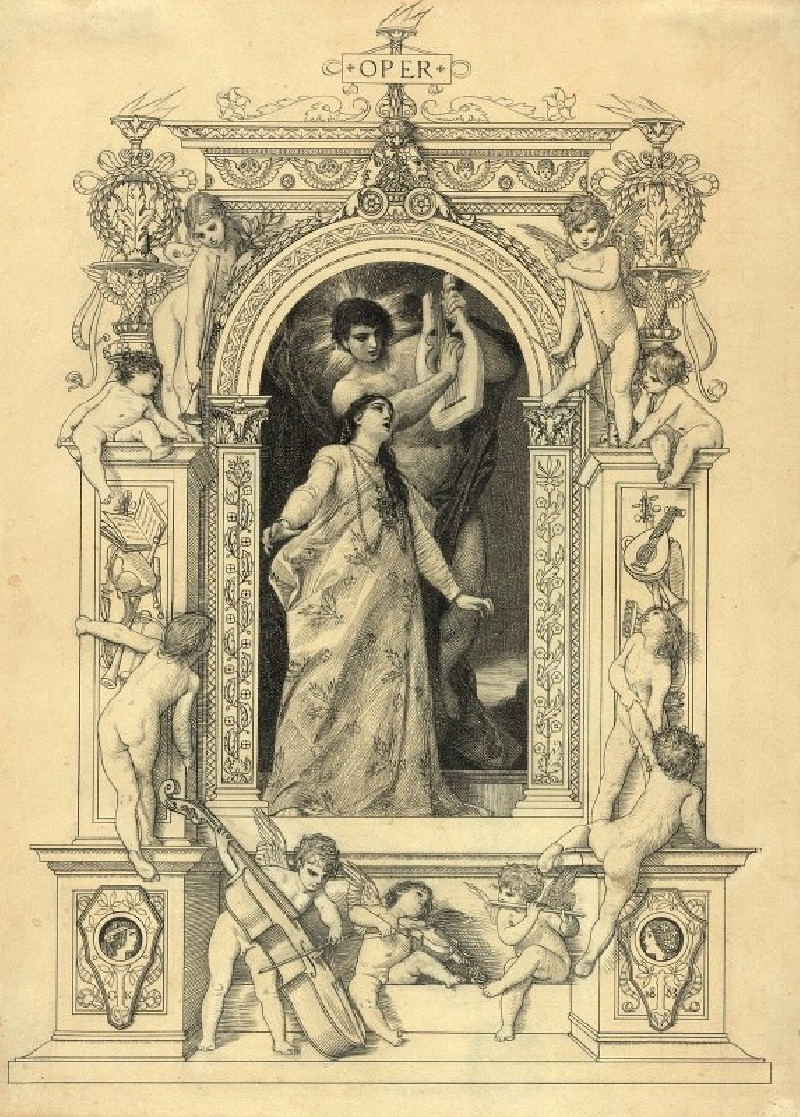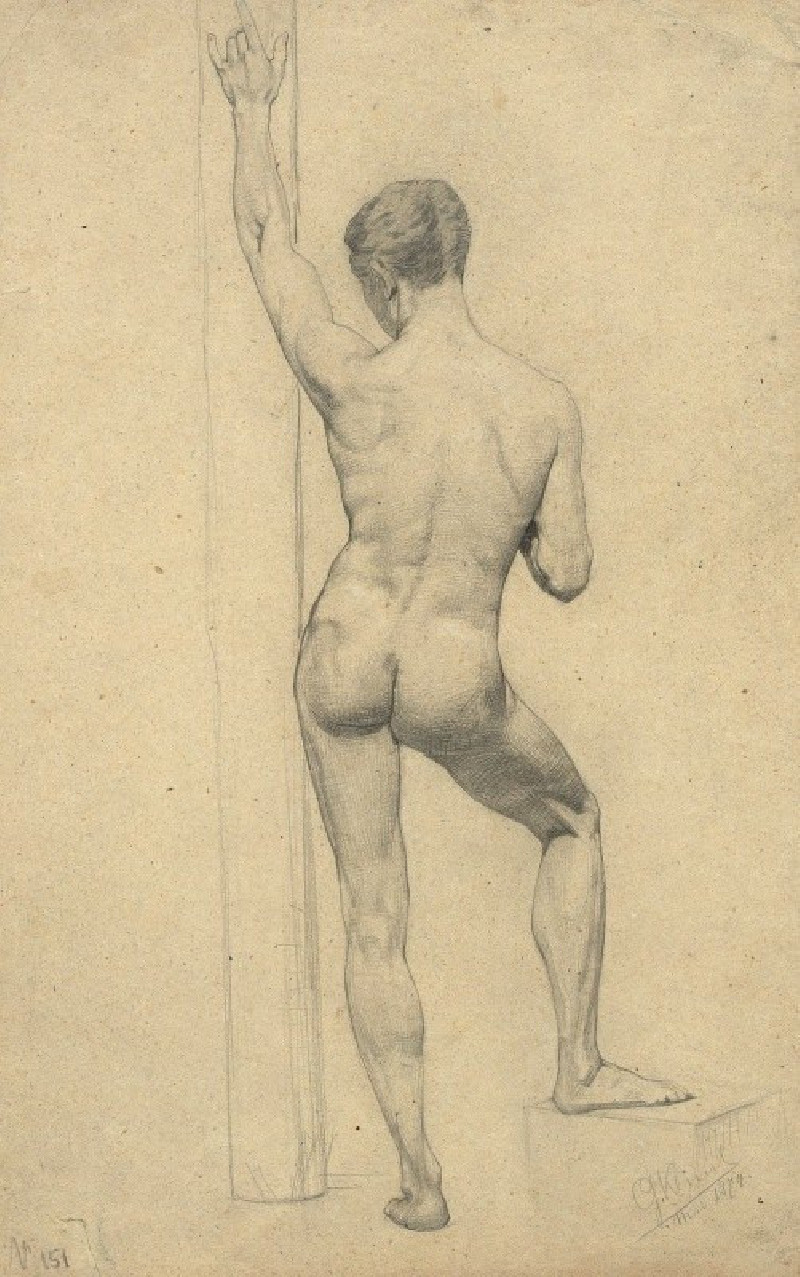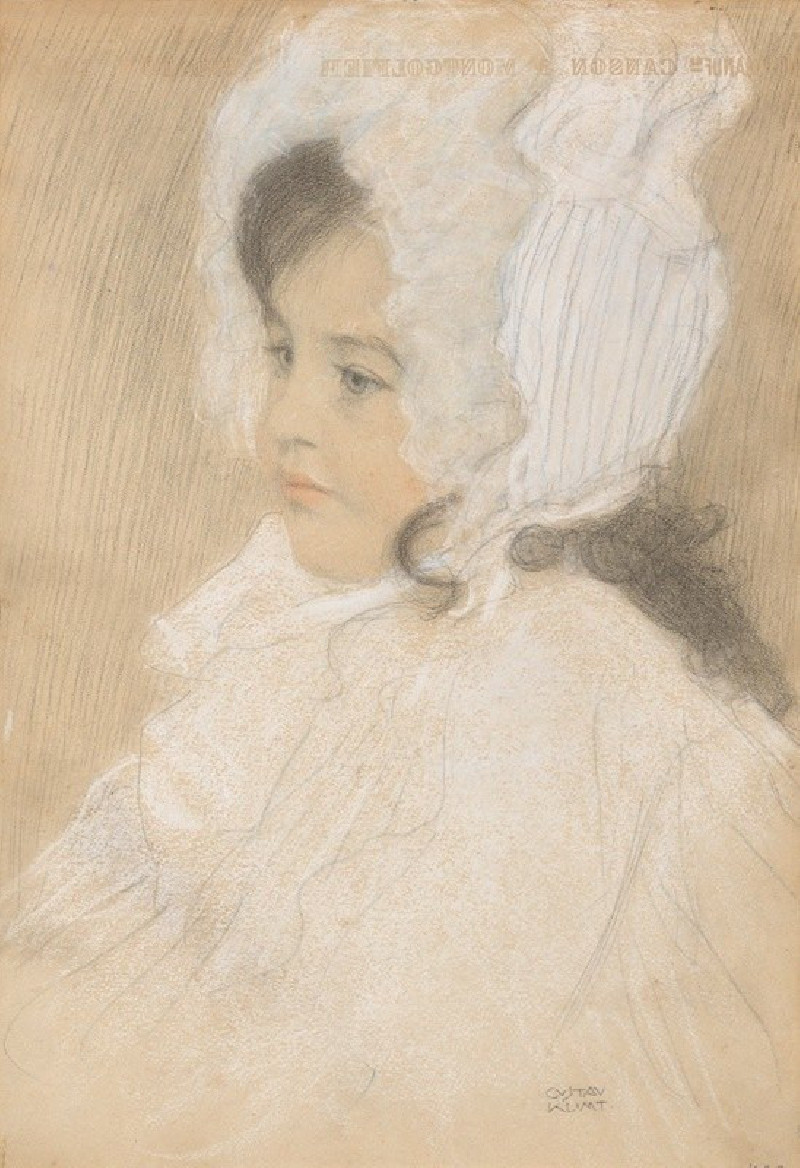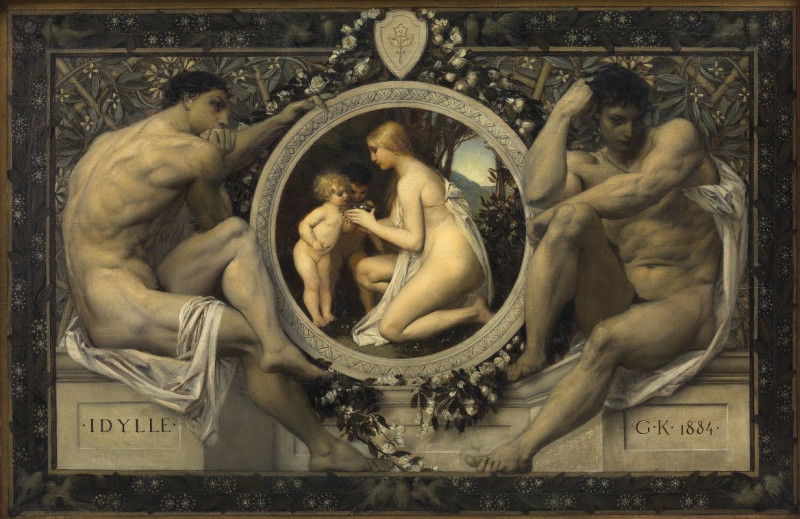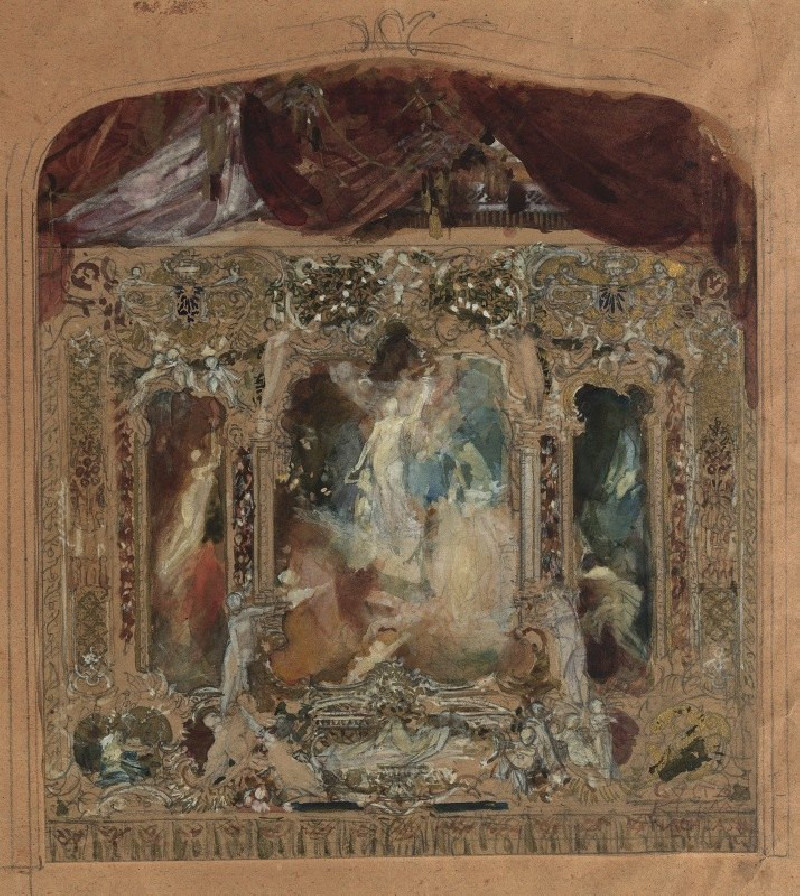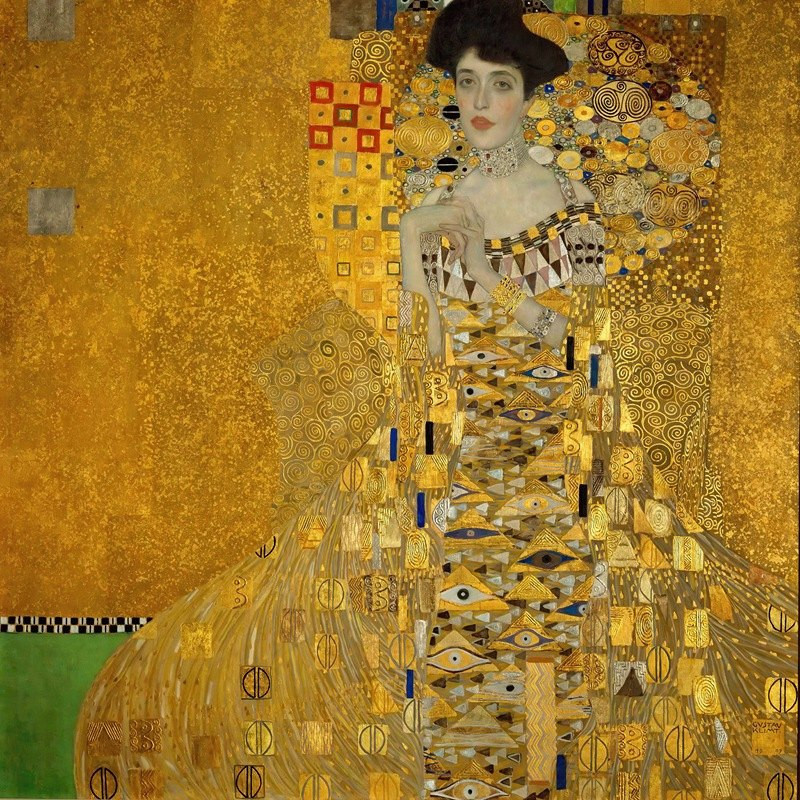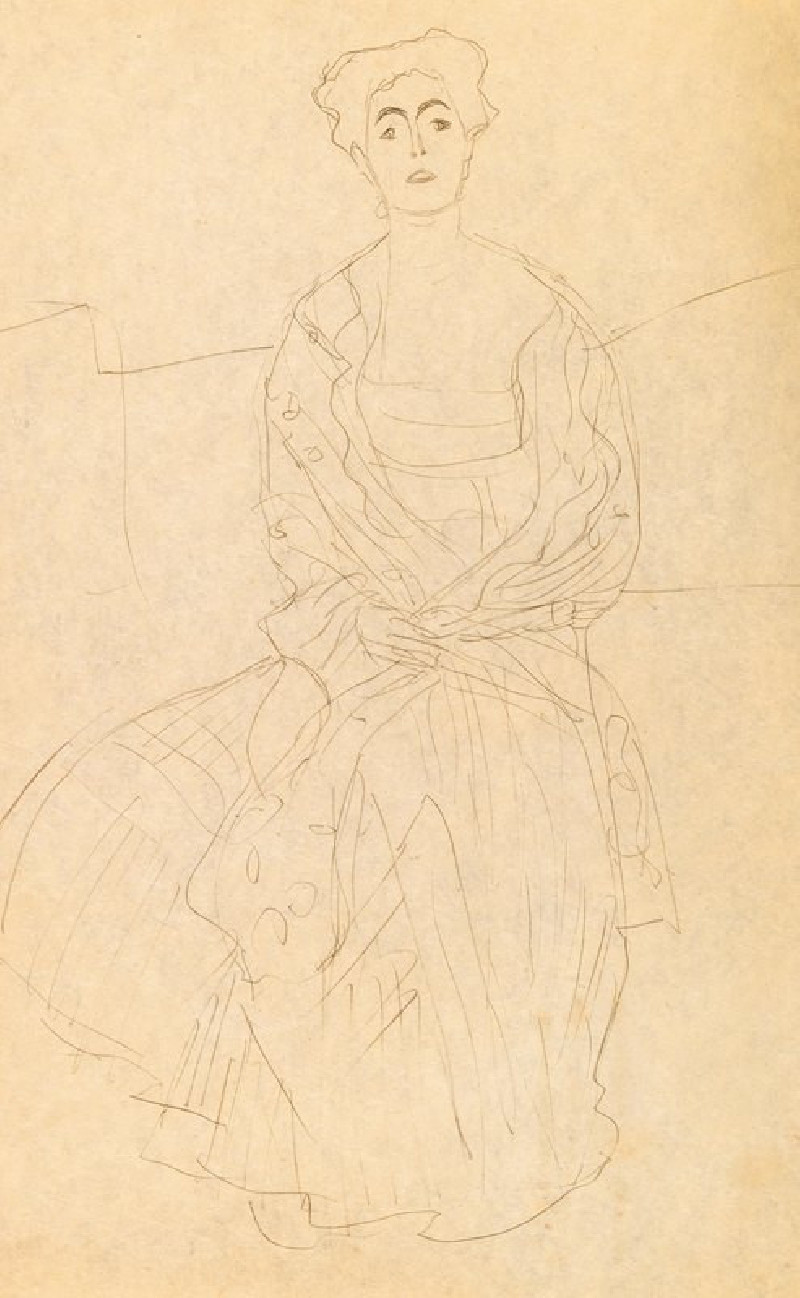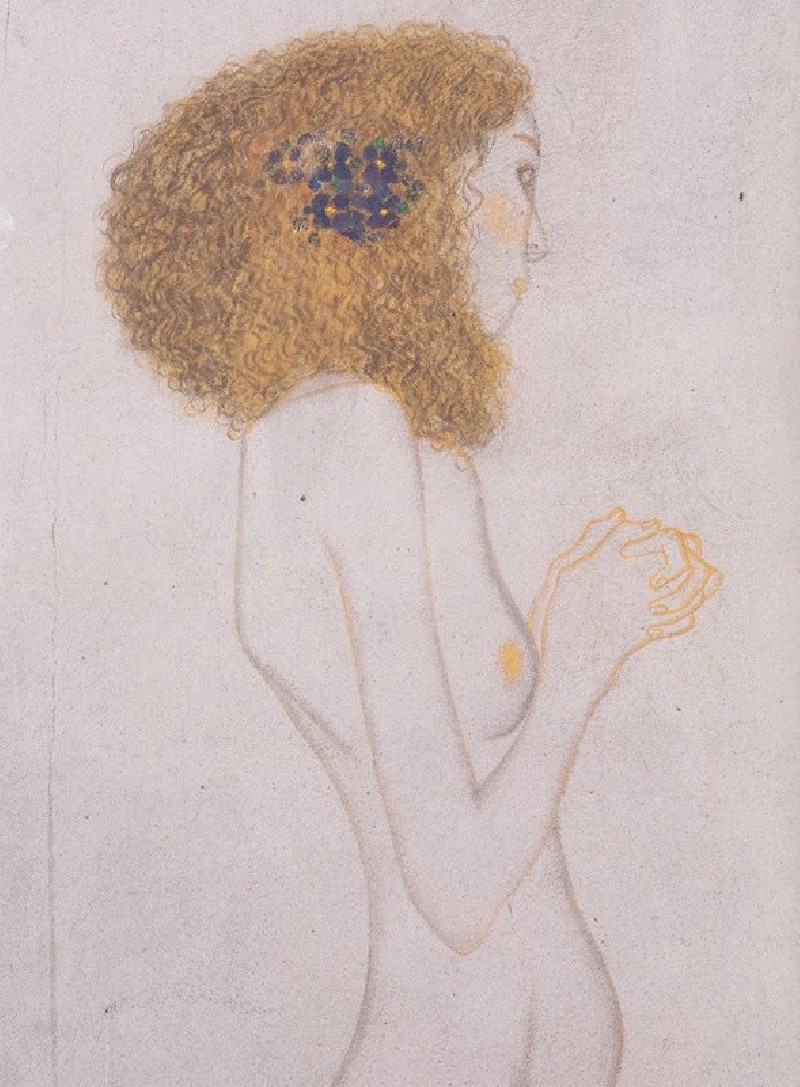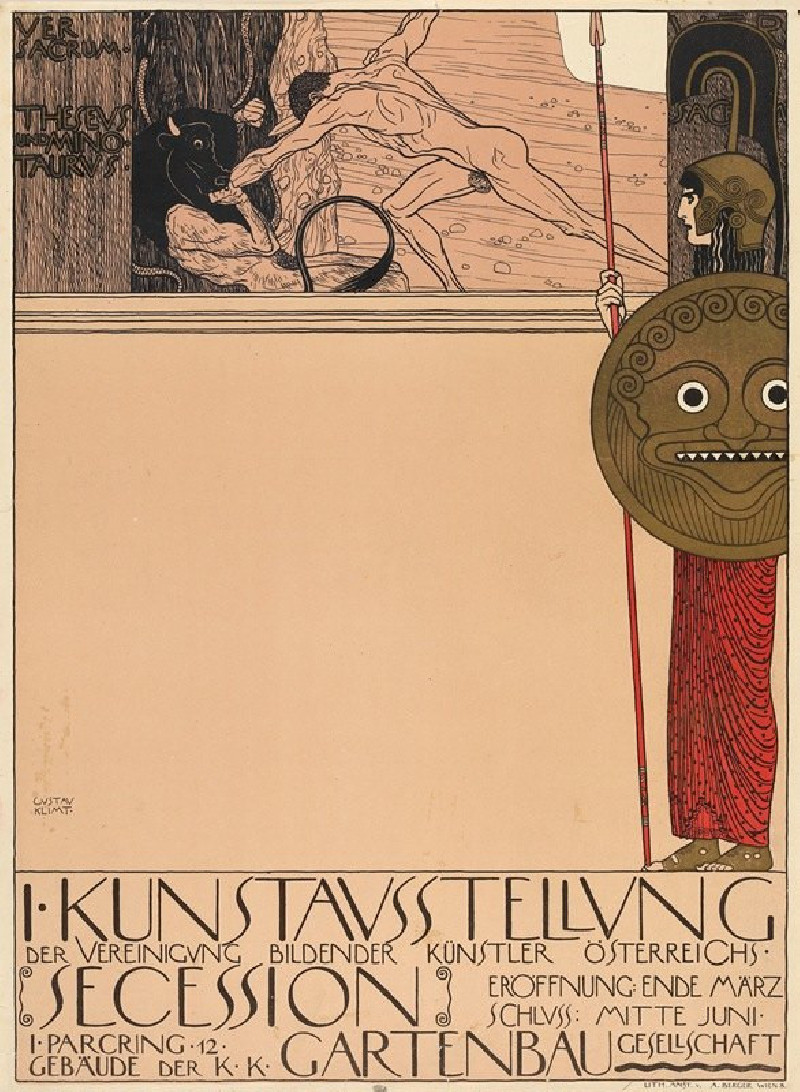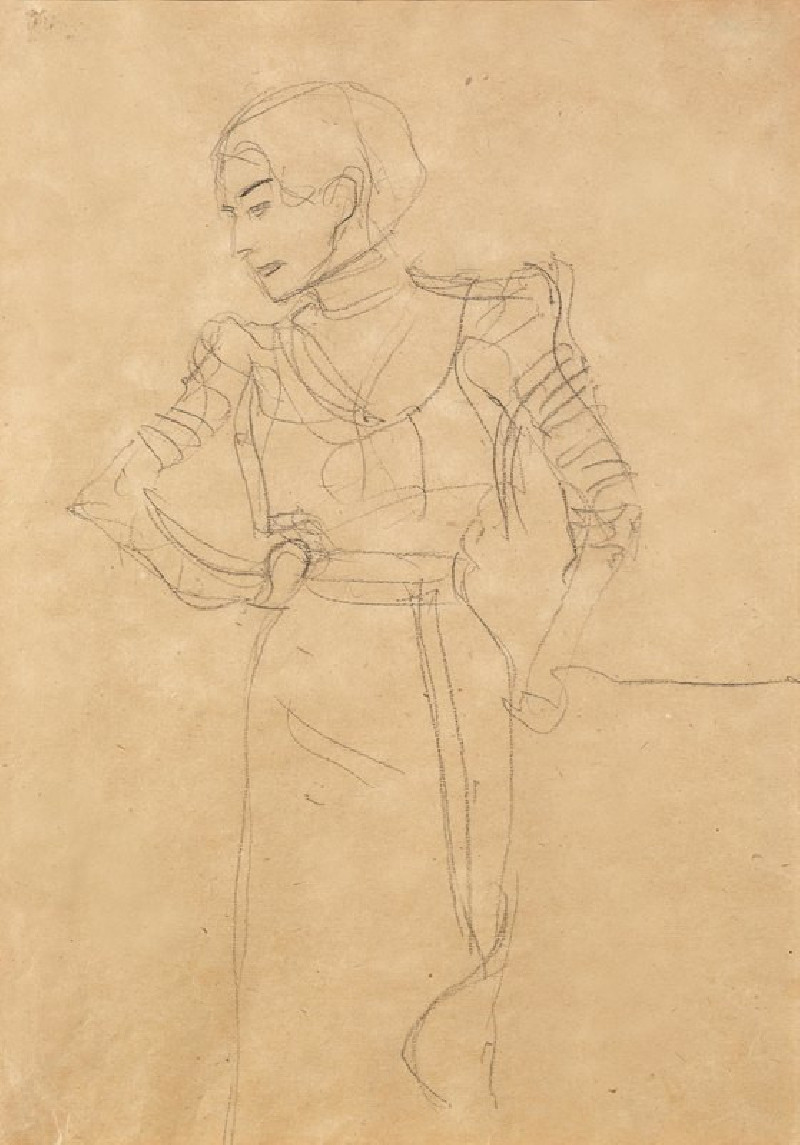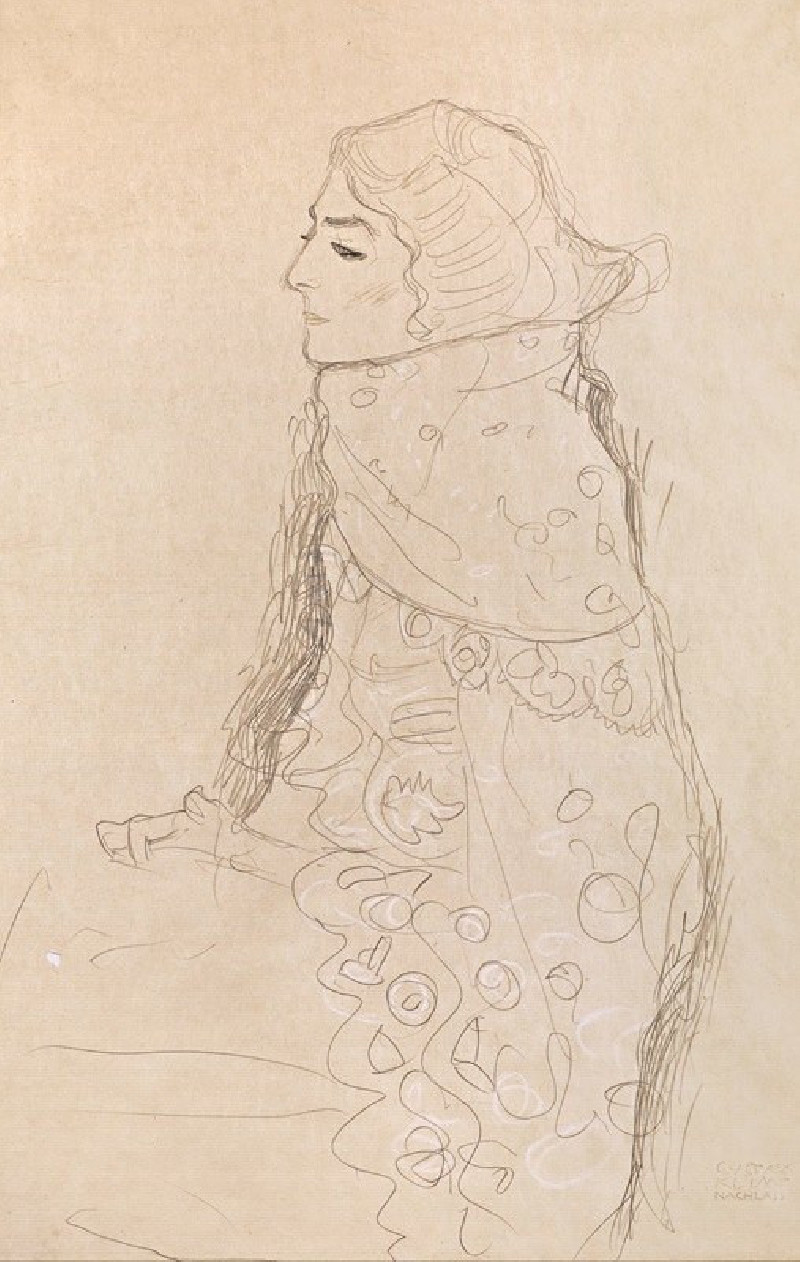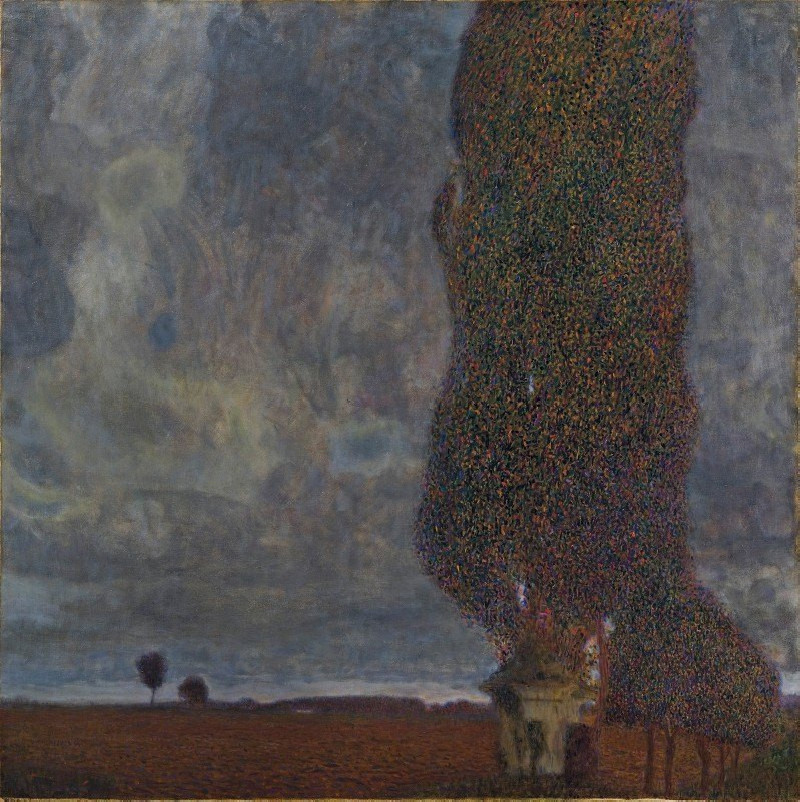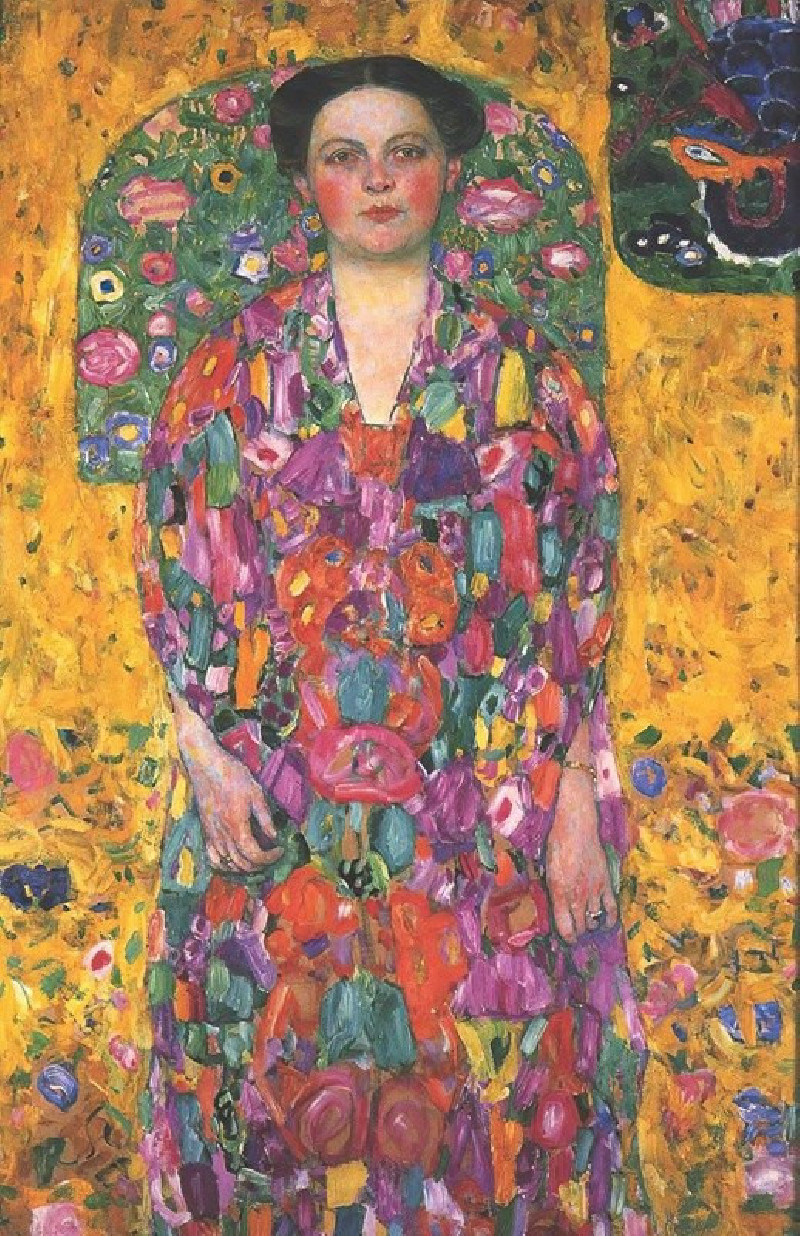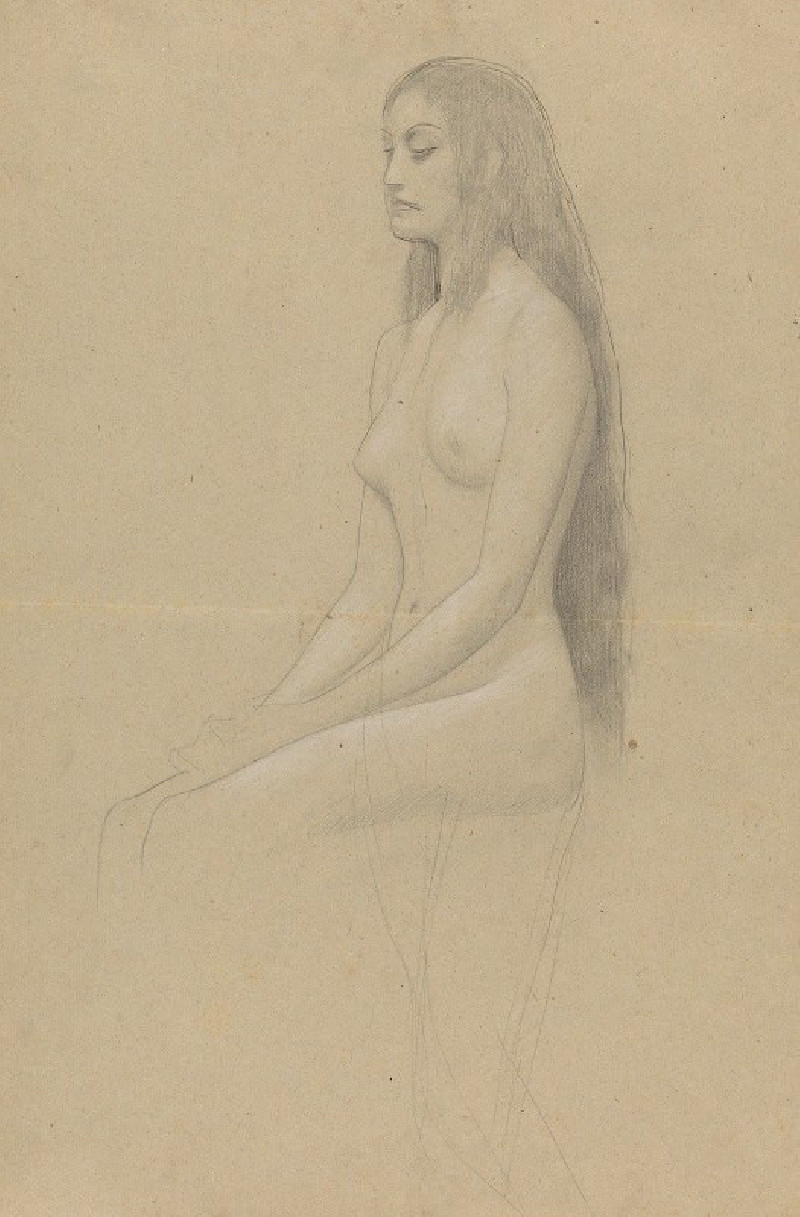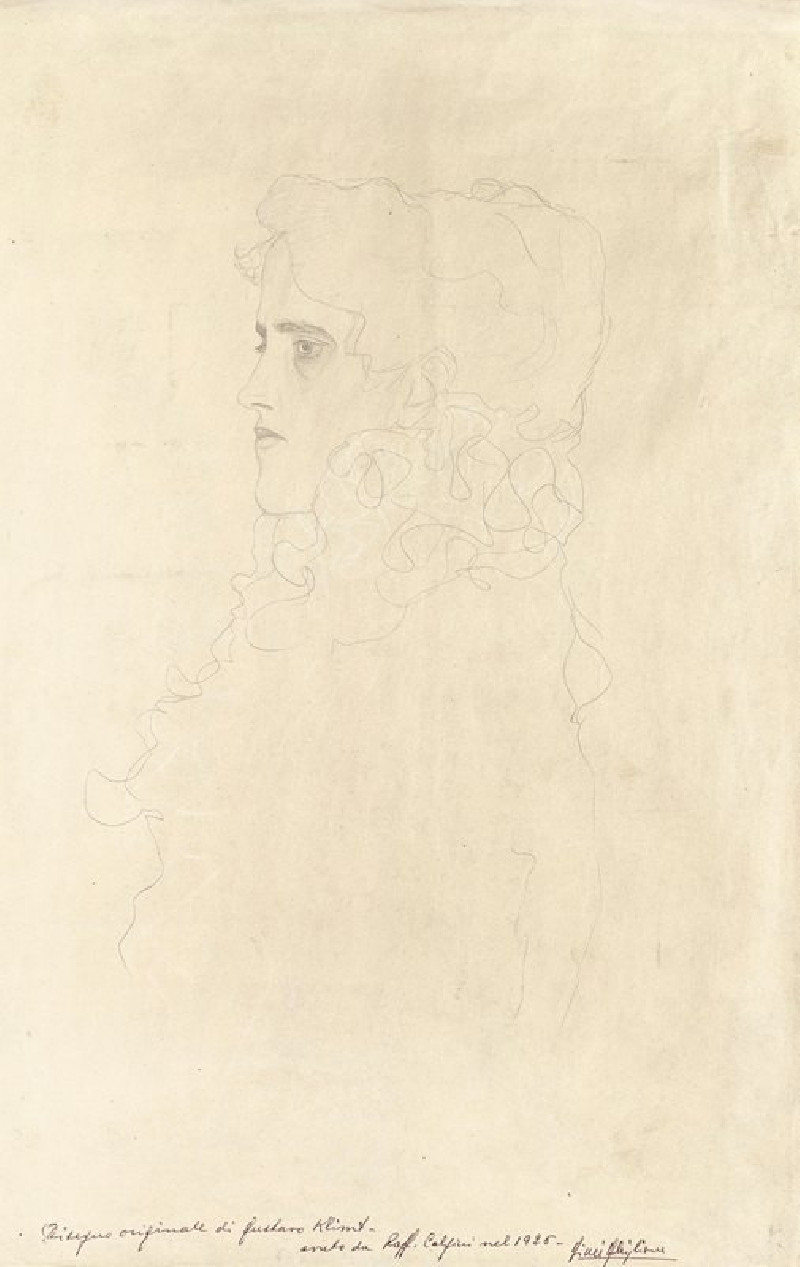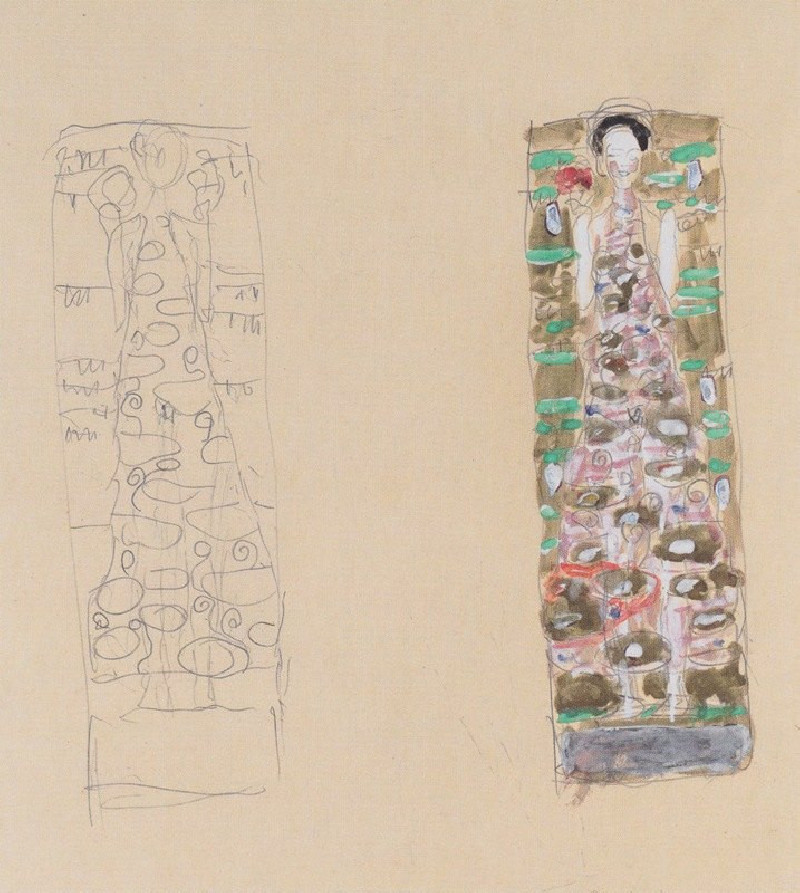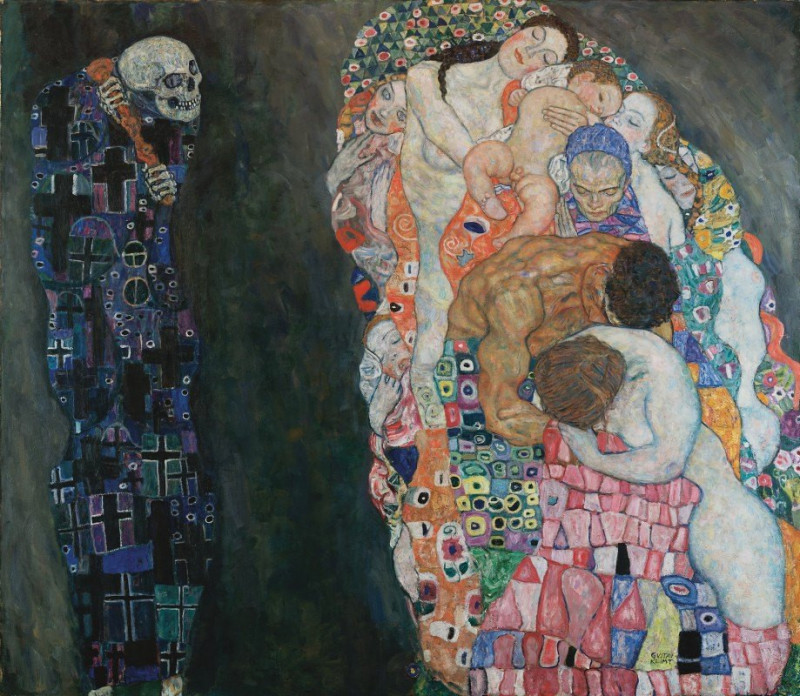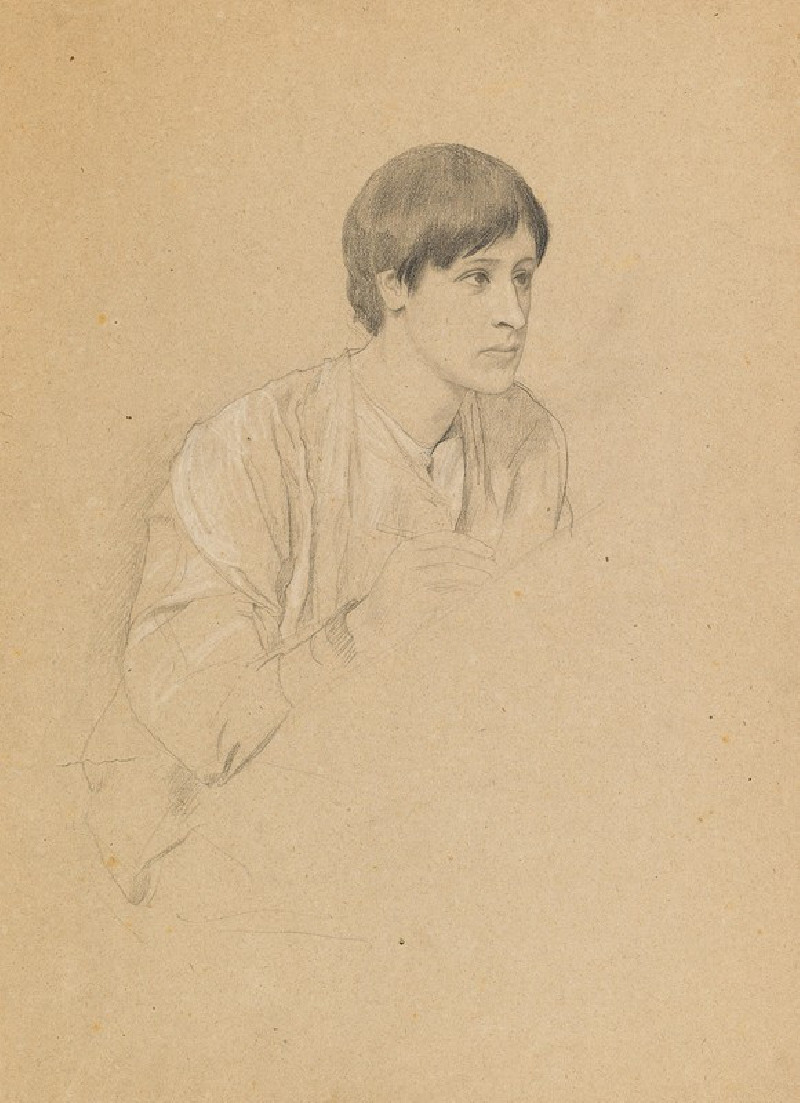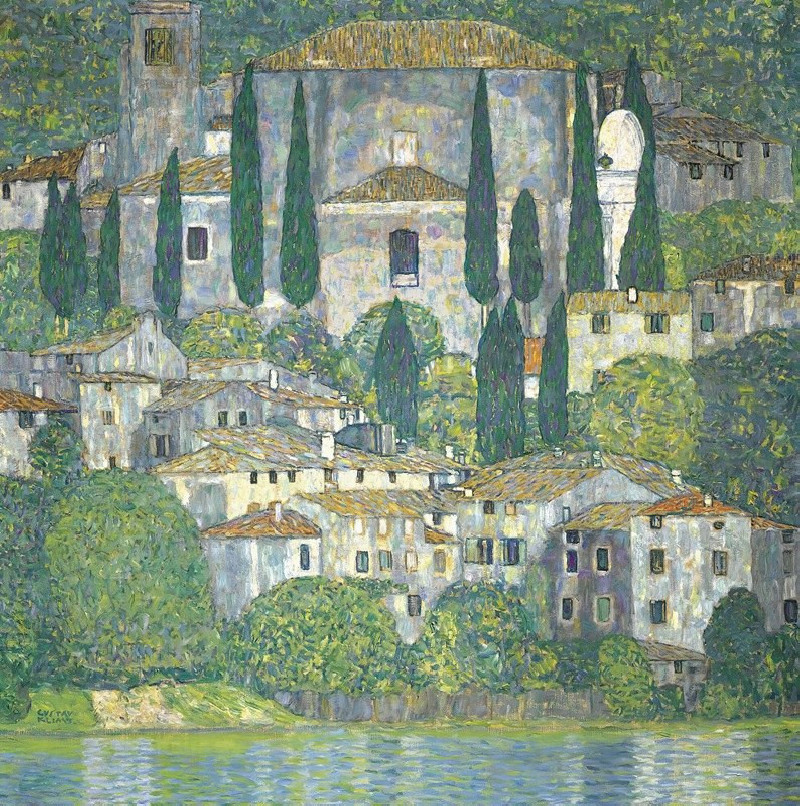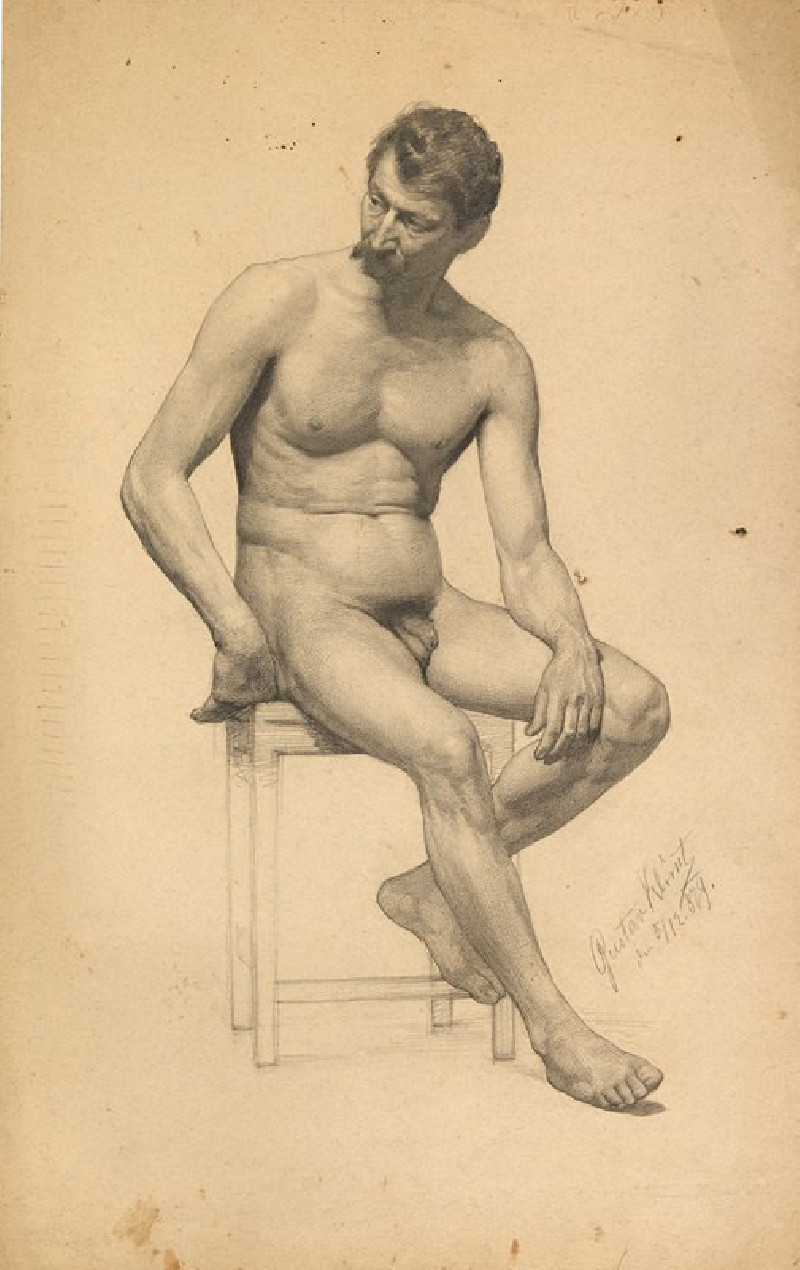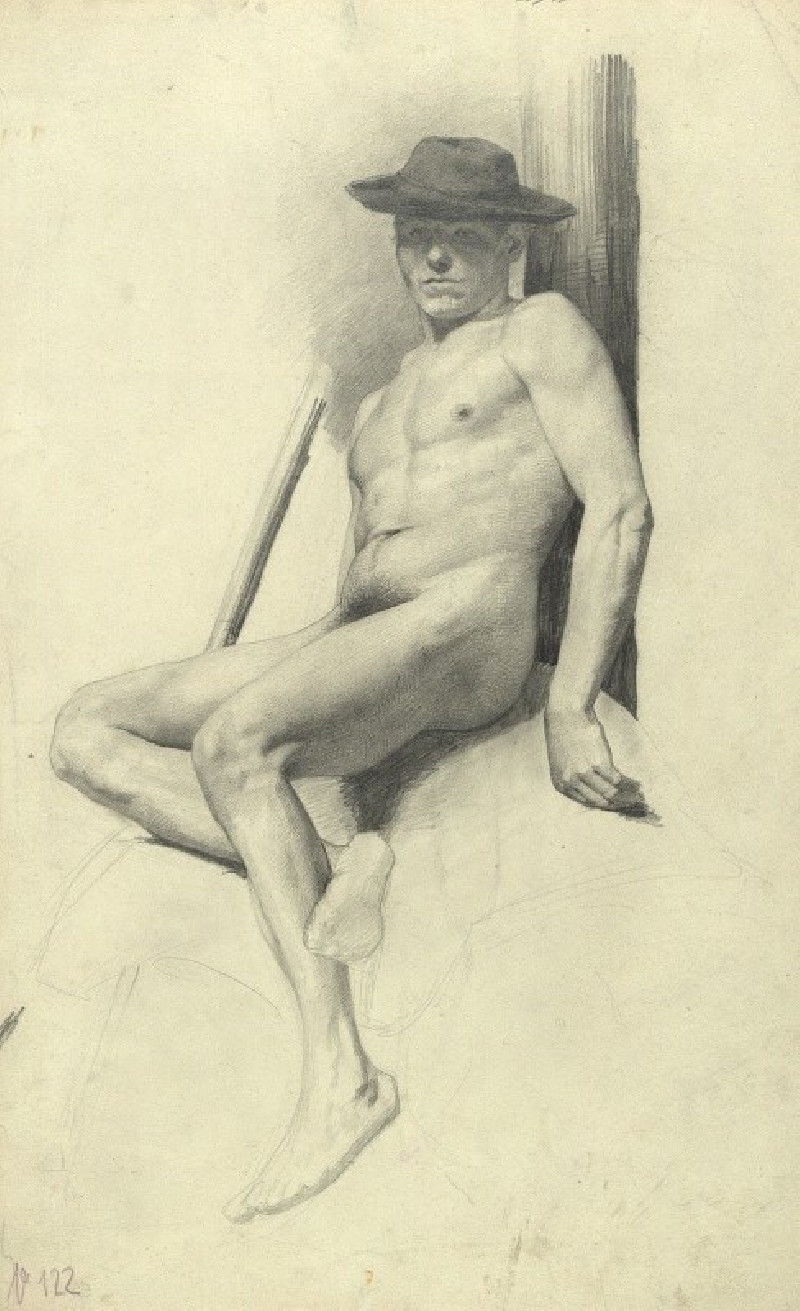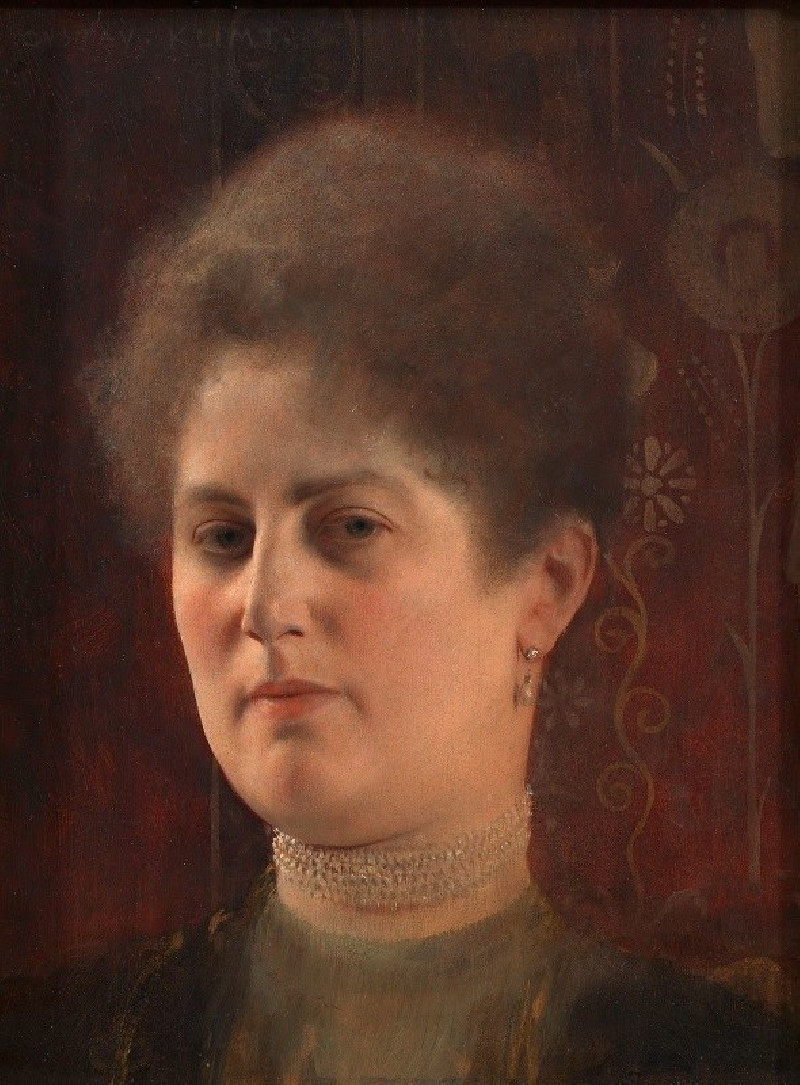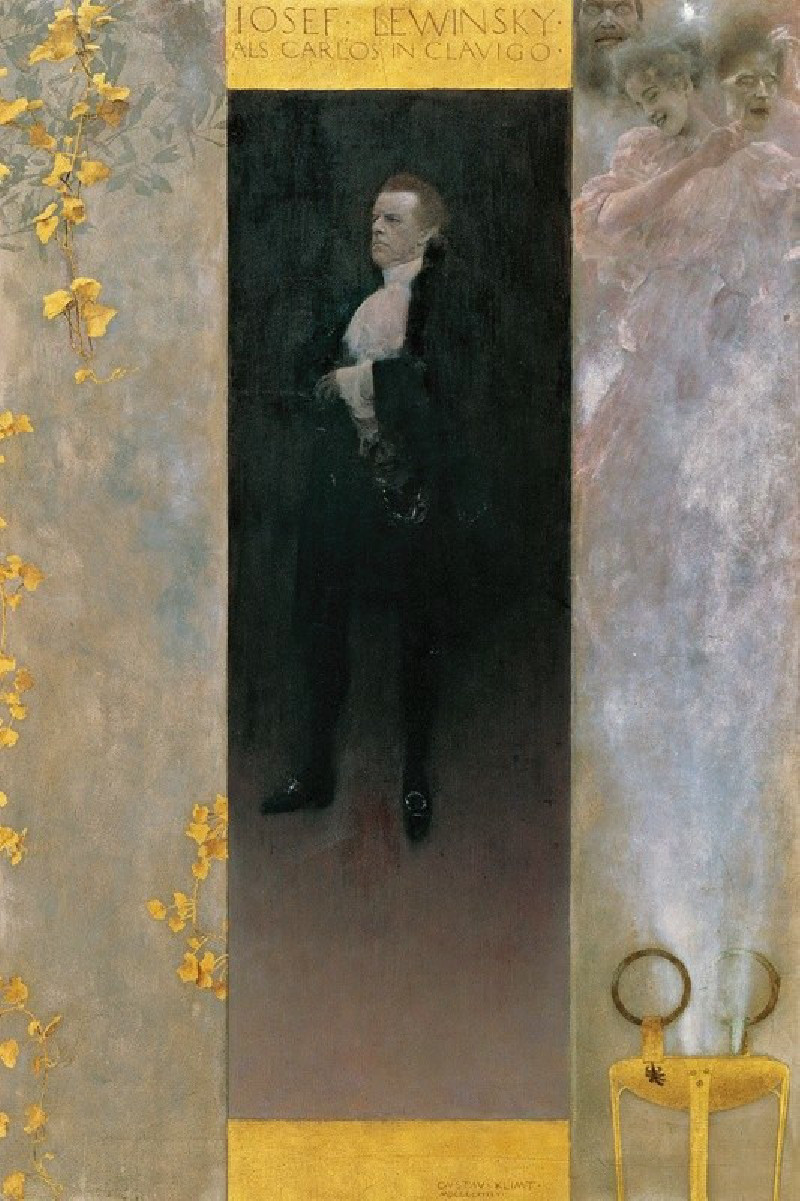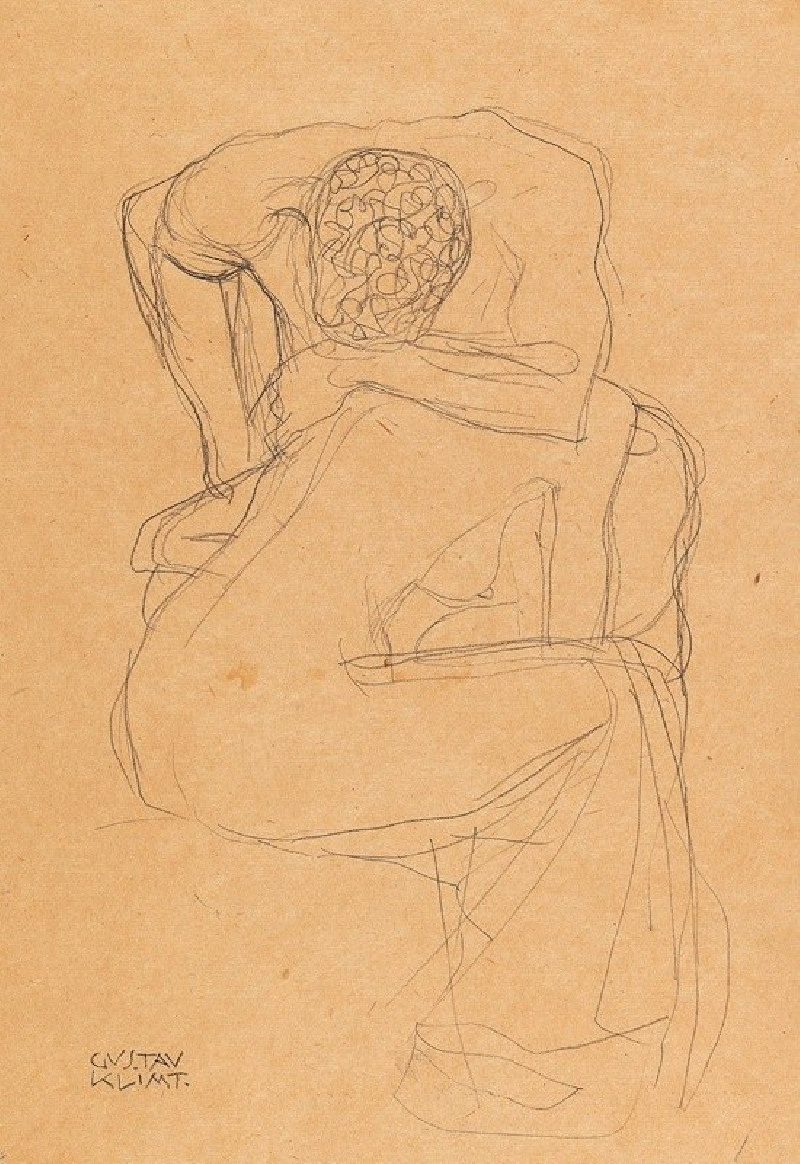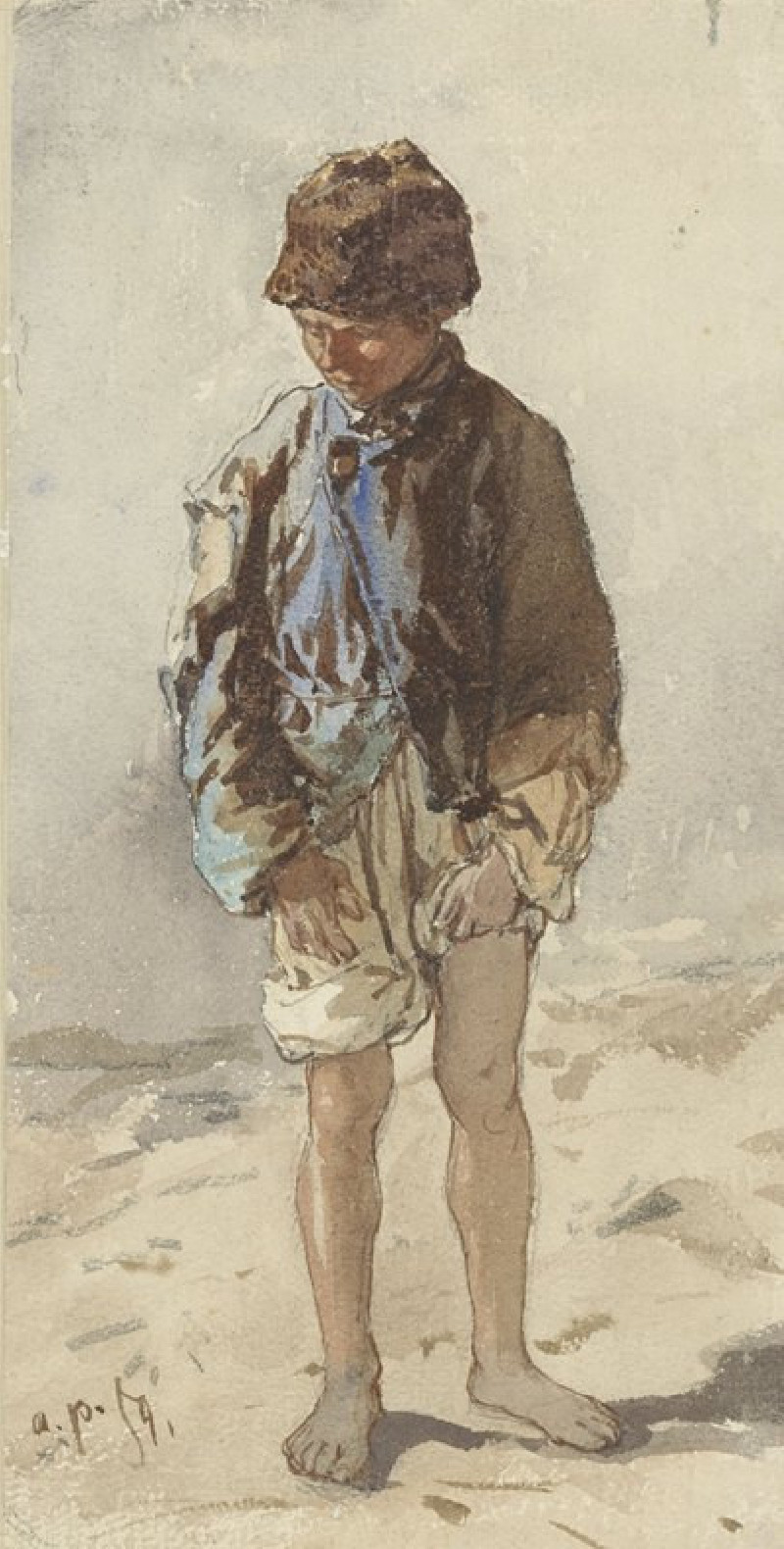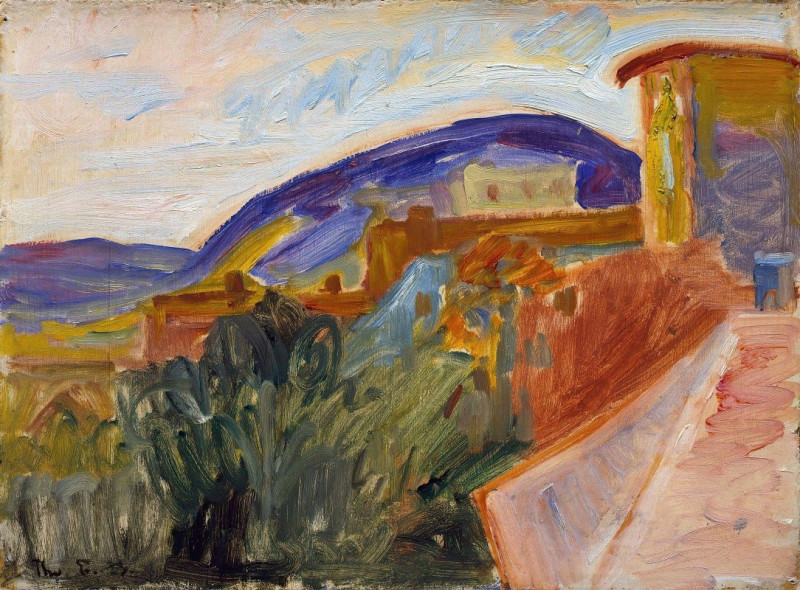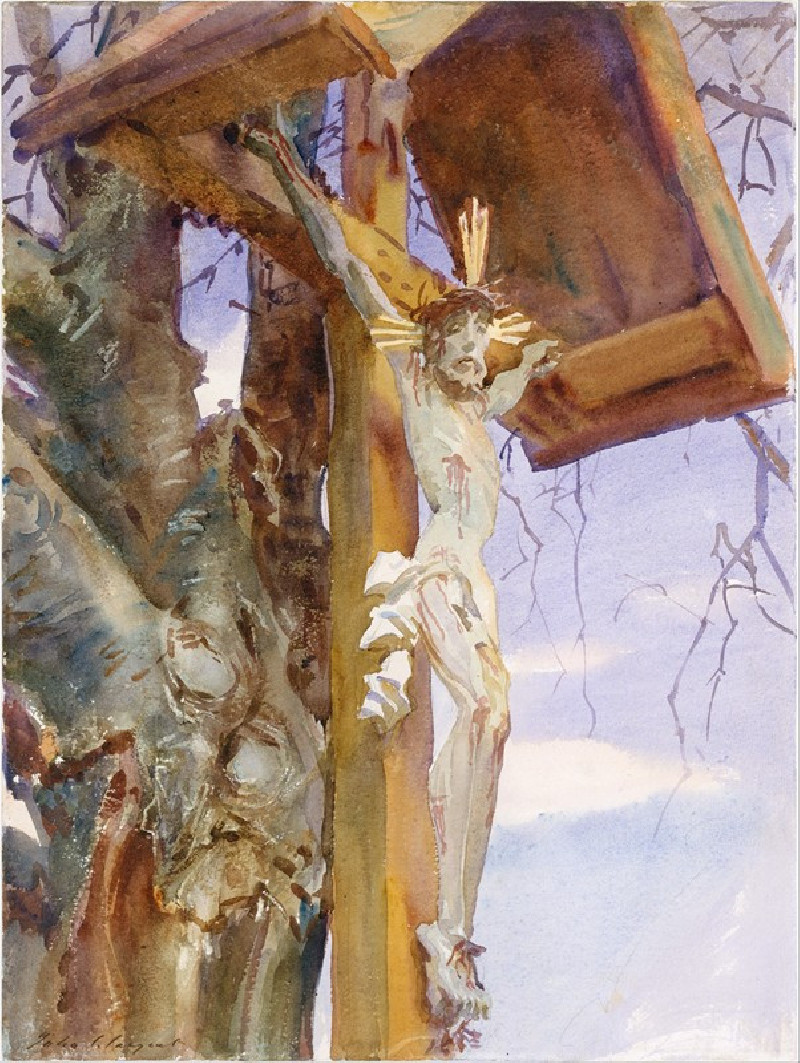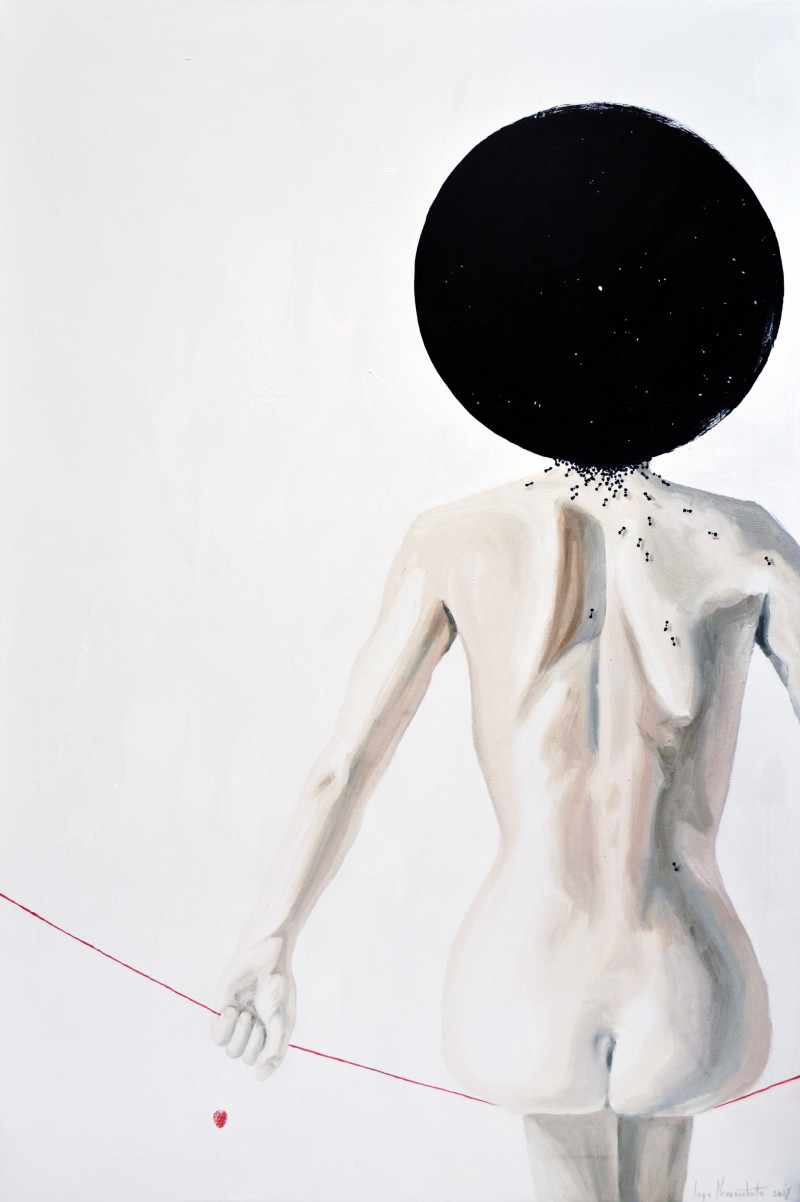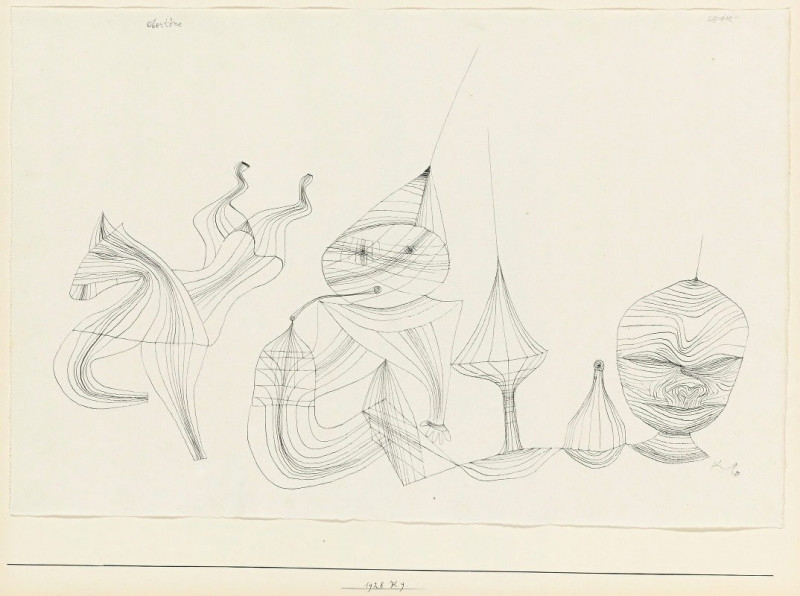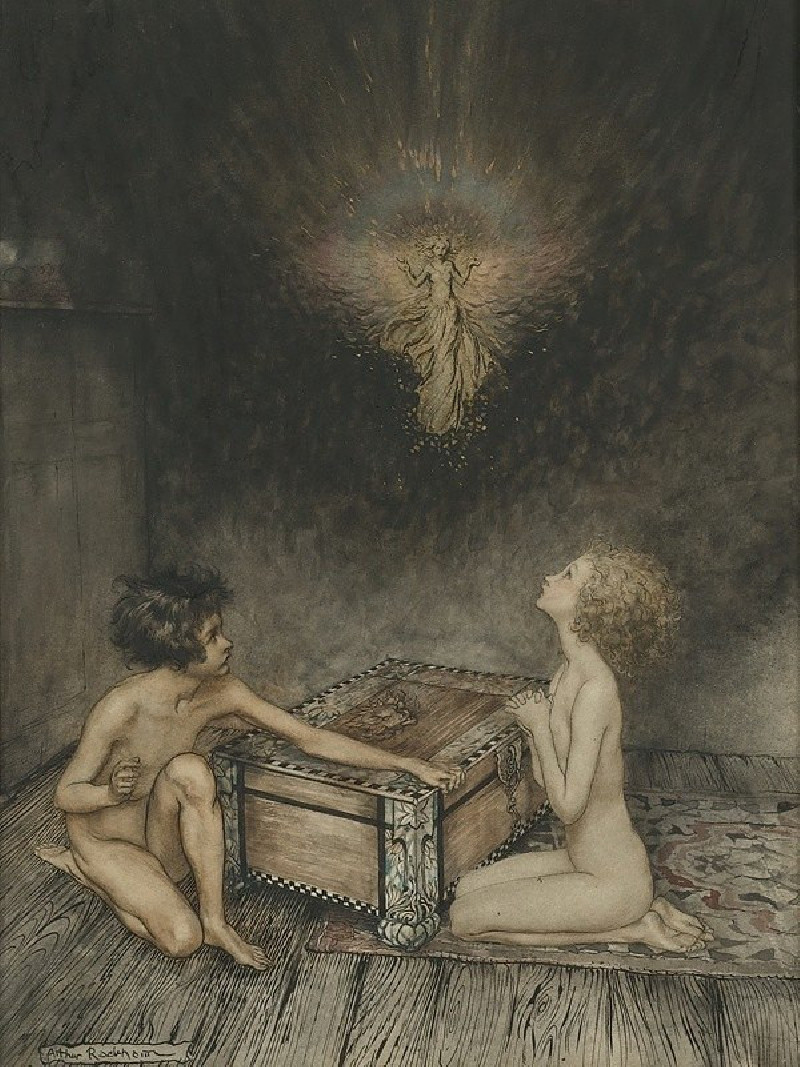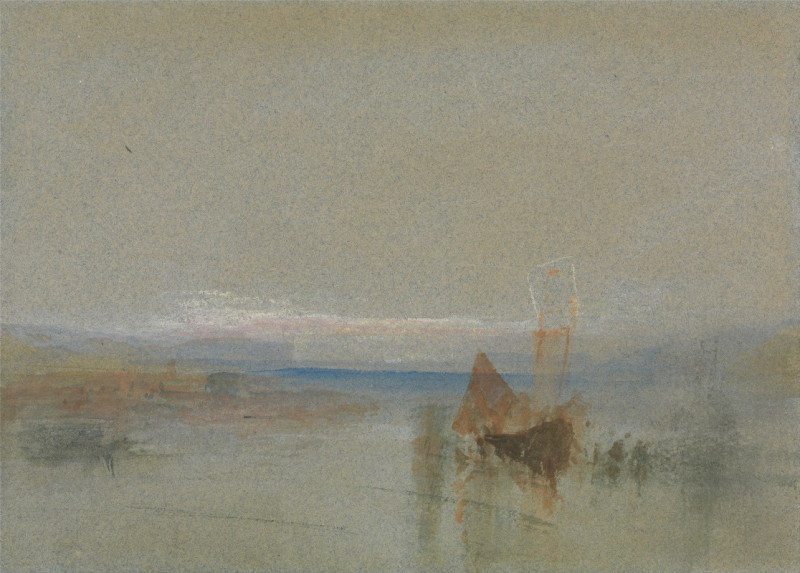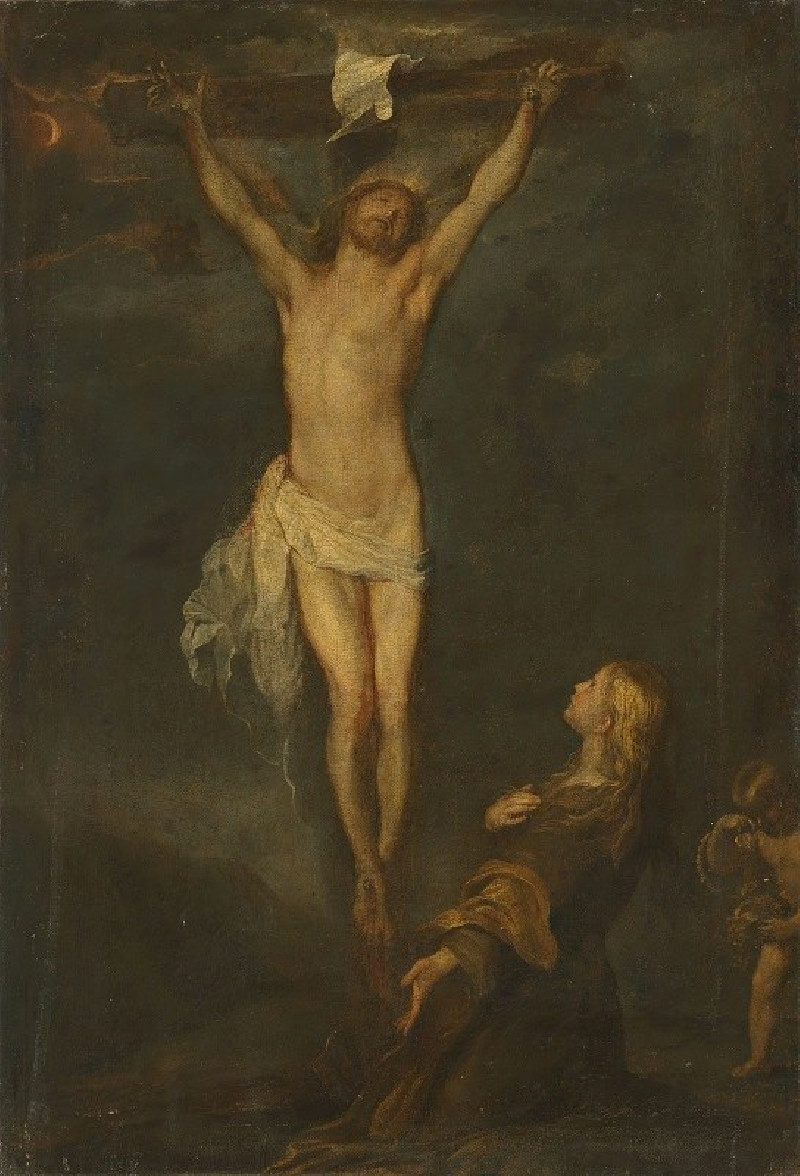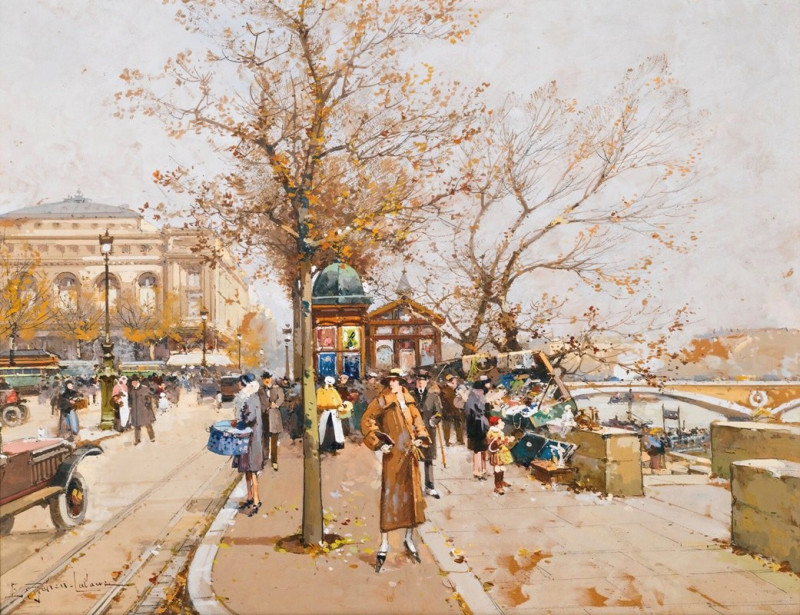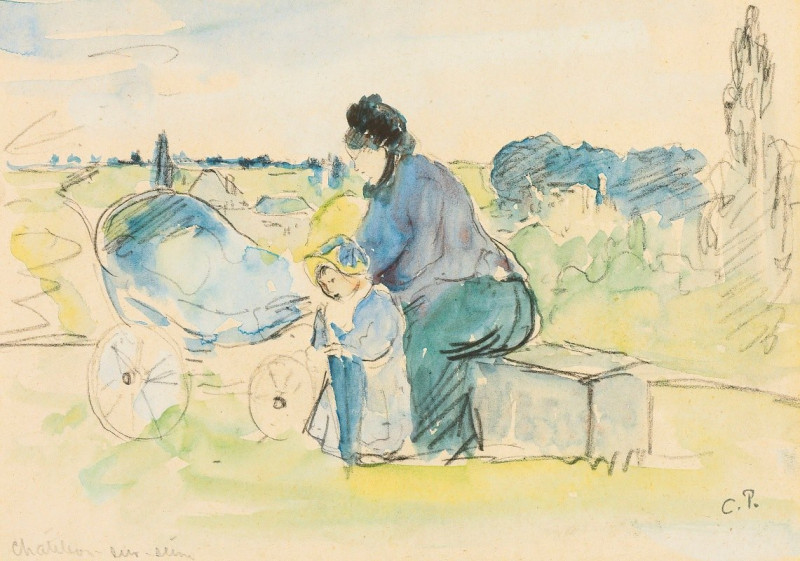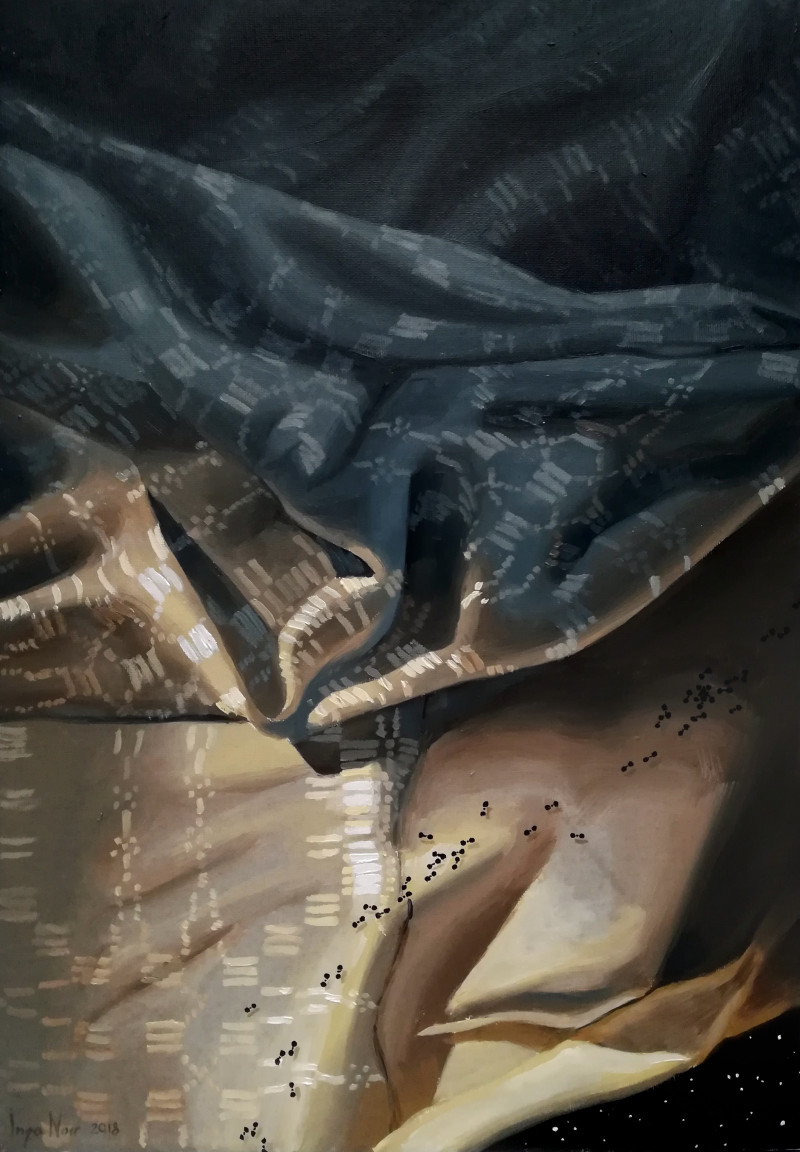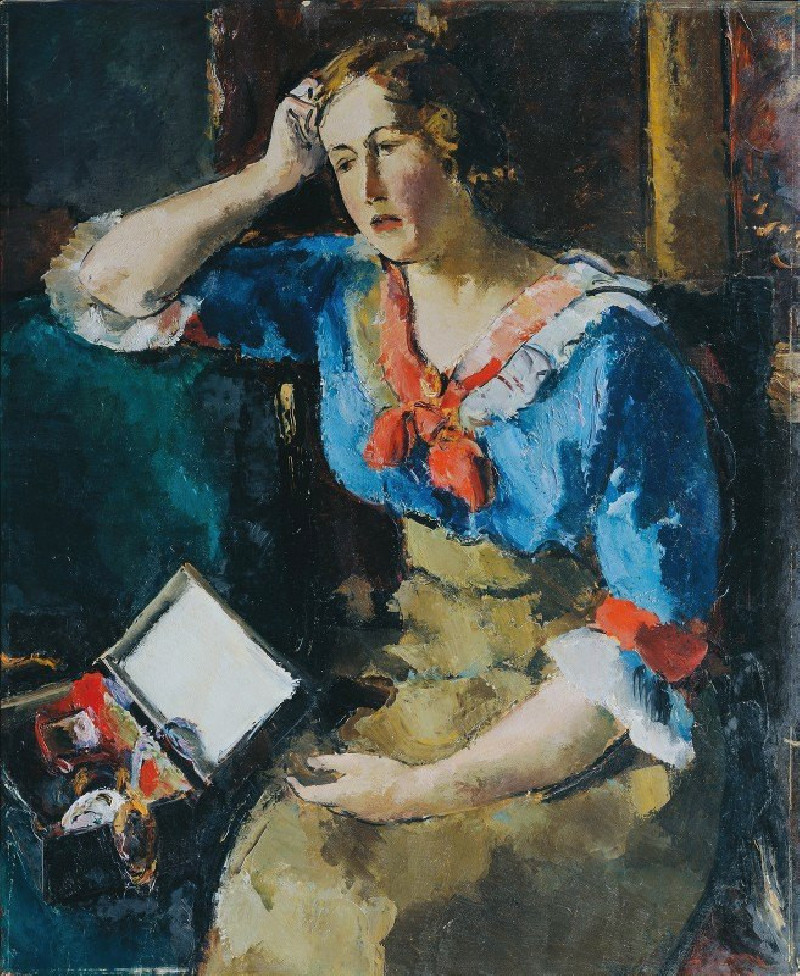Portrait of Josef Pembaur (1890)
Technique: Giclée quality print
Recommended by our customers
More about this artwork
Gustav Klimt’s "Portrait of Josef Pembaur" is a compelling and eclectic painting that blends traditional portraiture with symbolic and decorative elements. Dated 1890, this artwork predates Klimt's more famous golden phase, yet it intriguingly hints at the artist's evolving style and preference for ornamental richness.The painting features a realistic depiction of Josef Pembaur, a renowned pianist and composer, set against a backdrop filled with symbolic and mystic imagery. Pembaur is portrayed with a serious and introspective expression, suggesting his deep engagement with his art. His visage and attire are rendered with meticulous attention to detail, which contrasts sharply with the more abstract and decorative elements surrounding him.The background of the painting is divided into several panels, each rich with symbolism and decorative motifs. On the left, celestial symbols, including stars, are painted in gold, exuding a sense of timelessness and cosmic significance. A bold red panel, inscribed with "ANNO DOMINI MDCCCXC" (the year 1890), adds a vibrant splash of color and marks the year of the painting.On the right, the incorporation of Egyptian motifs, such as hieroglyphics and figures, reflect a popular fascination with Egyptology during the period and perhaps symbolize the transcendent and eternal nature of music and art. Small figures and glyphs at the bottom further enrich the visual narrative, giving viewers plenty to analyze and interpret.Distinctly, this portrait not only captures the likeness of Josef Pembaur but also immerses him in a world that transcends the conventional, reflecting both the artist's and the subject's connection to broader cultural and philosophical themes.
Delivery
Returns
Gustav Klimt (1862–1918) was one of the greatest Austrian symbolist painters of the Art Nouveau era. Renowned as one of the most prominent founding members, and as a president of the Vienna Art Nouveau movement (Vienna Secession). His works were mainly paintings, murals, and sketches. Marked by his numerous erotic drawings, Klimt's primary subject were female figures, and at one point his work was even criticized as pornographic. Klimt found financial success in his "Golden Phase" with decorative techniques and the prominent use of gold leaf in his paintings.

